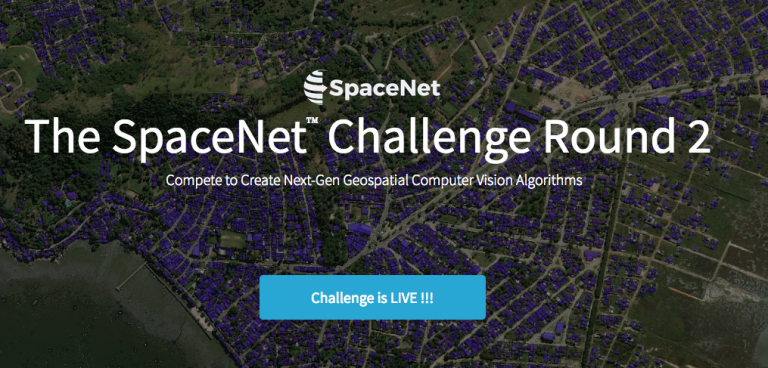

Just this week CrowdAI graced the stage of Y Combinator Demo Days with a platform that promises to leverage computer vision and machine learning to automatically annotate and quantify data hidden within satellite photography. Satellite imaging has also been analyzed to help the Navy find Somali pirates crowdsource the hunt for Malaysia Airlines flight 370 and identify deforestation zones. DigitalGlobe which operates imaging satellites has built out partnerships with companies like Facebook to target rural villages with internet access using photography as a guide. With an increase in the number of CubeSats high-resolution satellites and drones of every shape and size we have accumulatedpetabytes of imagining data thatcan beprocessed with analytics to solve myriad problems.

The data are being hosted by Amazon Web Services as part of a partnership. We encourage industry leaders, academics and nongovernmental organizations to experiment with the data, as it’s our collective imagination that will unlock the most value and transform how we live.SpaceNet satellite imagery repository launched by DigitalGlobe CosmiQ Works and NVIDIA on AWS Aconsortium of companies including DigitalGlobe CosmiQ Works and NVIDIA todaylaunched SpaceNet an open-data initiative aimed at improving image analysis tools. “By opening access to this type of data and lowering barriers to adoption, we aim to foster broad and rapid advances in commerce, conservation and well-being across many industries. 21 statement announcing the firm’s participation in SpaceNet. In the past, high resolution SAR data was largely reserved for government and defense applications, Andrew Ulmer, Capella business development vice president, said in an Aug. SpaceNet may incorporate SAR in its sixth challenge scheduled to begin in early 2020, Lewis said. We couldn’t be more excited to explore what it’s like to combine both electro-optical and SAR to solve a foundational mapping problem.” “While we’ve seen tremendous improvement in the models that we’ve open-sourced through our internal research as well as through our challenges, we’re now ready and the open-source communities is ready to tackle the next step, which is applying two different types of data simultaneously to solve one problem. “The partners have collectively agreed that geospatial mapping challenges are rarely resolved with just one type of data,” Lewis said. “That’s why we think it’s an optimal time to be focusing on how to incorporate SAR into a future challenge.”īefore Capella joined, SpaceNet partners were CosmiQ Works, Maxar Technologies, Intel AI and Amazon Web Services. Since the first challenge in 2016, “we have seen the community grow over time in the maturity of their solutions,” Lewis said. “Working with partners like CosmiQ Works and the SpaceNet team, we will make sure that there’s a good array of open source tools that can easily plug and play with our dataset,” Soenen said.įor SpaceNet’s fifth and most recent challenge, competitors are automatically identifying roads and determining optimal routes based on travel times by applying artificial intelligence to satellite imagery. “At Capella, we want to break down those barriers to entry in working with SAR and make sure that we’re providing products that are easy to work with,” Soenen said.

SAR satellites also gather imagery and data through clouds, smoke and at night.

While some people perceive SAR data to be more difficult to work with than electro-optical imagery, one of the datasets it provides is so similar that some of the same computer vision tools will work on electro-optical and SAR data, Soenen said. “We will have a high resolution, hourly dataset to contribute to the SpaceNet challenges in advance of the routine operations of Sequoia.” “We’ve collected aerial data and produced it according to our product specifications for our upcoming satellite data,” Soenen said. Capella plans to launch its first operational spacecraft, Sequoia, in early 2020.Ĭapella also is capturing imagery with its SAR payload on an aircraft. The company has not publicly released data from that spacecraft. Capella launched its first satellite in December 2018. Having data out there under an open license is going to foster the development of nontraditional applications for SAR data.”Ĭapella has raised more than $50 million for a constellation of 36 SAR satellites designed to capture imagery with a resolution of 50 centimeters and revisit sites hourly. “This is the first step in our engagement with the broader community. For Capella, joining SpaceNet is a good way “to get SAR data into the hands of a broader range of data scientists and software engineers,” said Scott Soenen, Capella product engineering vice president.


 0 kommentar(er)
0 kommentar(er)
